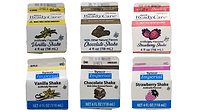Supplier News
SOMIC Moves North American HQ to Support U.S. Assembly

SOMIC Packaging, Inc. has relocated its North American headquarters to a new facility in Inver Grove Heights, Minn. Image courtesy of SOMIC Packaging, Inc.
SOMIC Packaging, Inc., subsidiary of Amerang, Germany-based SOMIC, has opened a new North American headquarters with the goal of assembling and shipping its 434 case packing system in the United States.
The company, which moved its North American operations from the Chicago area to Eagan, Minn., in 2018, recently purchased and renovated a 48,000-sq.-ft. facility in Inver Grove Heights, Minn.
Peter Fox, CEO of SOMIC Packaging, Inc., notes the company would receive fully assembled machines from Germany at its previous facility, where it would commission them and perform factory acceptance tests (FAT) before shipping them to customers.
However, the United States now represents 35% of SOMIC’s global volume, so its production capacity in Germany has been strained – particularly since the COVID-19 pandemic. That, combined with the introduction of its 434 case packing system, necessitated the move.
“With the advent of the 434, we’ve changed the structure of the frame that now facilitates our ability to assemble them in the United States, but we needed more space, and of course, we needed more people,” Fox says.

Image of SOMIC's new commissioning hall courtesy of SOMIC Packaging, Inc.
Apart from additional manufacturing and inventory space, the new building includes more than 10,000 sq. ft. of administrative space and 8,000 sq. ft. for future office requirements. SOMIC Packaging, Inc. worked closely with its German counterparts to design the larger facility, ensuring the commissioning hall was air conditioned and full of natural light.
“That was a key criteria in selecting the building that we bought and also the design that we put into it,” Fox says. “We added windows to an existing building, which was not inexpensive. Then we incorporated a lot of glass so that you have flow-through of natural light. That’s all reflected in our facility in Amerang. We probably have the most beautiful commissioning hall in the packaging industry – bar none. It’s all glass. It makes a big difference.”
The company also collaborated with its German colleagues to guarantee the assembly process in Minnesota mirrors the one in Amerang.
“We want consistency, we want continuity,” Fox says. “We want to be able to do everything the same regardless of where it is.”
434 Case Packing System
SOMIC’s 434 Case Packing System builds on the 424, providing easier access to the solution’s interior components – something the company’s customers asked for, Fox says.
“We took that knowledge and built around the legacy of the 424 but added some of the things that would make it easier and more practical for them to work with – more visibility, bigger doors,” he says. “We wanted to build a product our customers would appreciate.”
The new frame construction features doors with a 180-degree opening, and new LED corner lighting offers better visibility when making format changes, cleaning and performing maintenance.

Image of the 434 case packing system courtesy of SOMIC Packaging, Inc.
Designed to handle up to 34 cases per minute, the 434 is capable of packing flat sachets, standup flexible pouches, cans, cups, trays, jars, bottles, tubes and blister packs. Offering single and multi-row grouping and multi-layer stacking, format adjustments are 70% faster than previous systems.
A standard 434 has a base carton or case packing section that incorporates custom infeed and collation. Its decentralized servo technology suits the machine’s compact, modular design. Automated machine adjustments have been incorporated to ensure the machine will automatically adjust to the precise settings when changing from one format to the next.
Additionally, the machine’s supply unit contains all noise-intensive components, which reduces sound levels. It also offers a combined SOMIC QuickChange automatic adjustment system, which prevents incorrect operation and allows for a faster and easier format changeover.
Fox also notes the 434 features standardized components, allowing for shorter delivery lead times for its customers in the cheese, confectionery, snack and pet food industries.
“By streamlining things inside, and providing the customer with more value, it’s a win-win,” Fox says. “It’s really going to benefit everybody.”
Looking for a reprint of this article?
From high-res PDFs to custom plaques, order your copy today!






